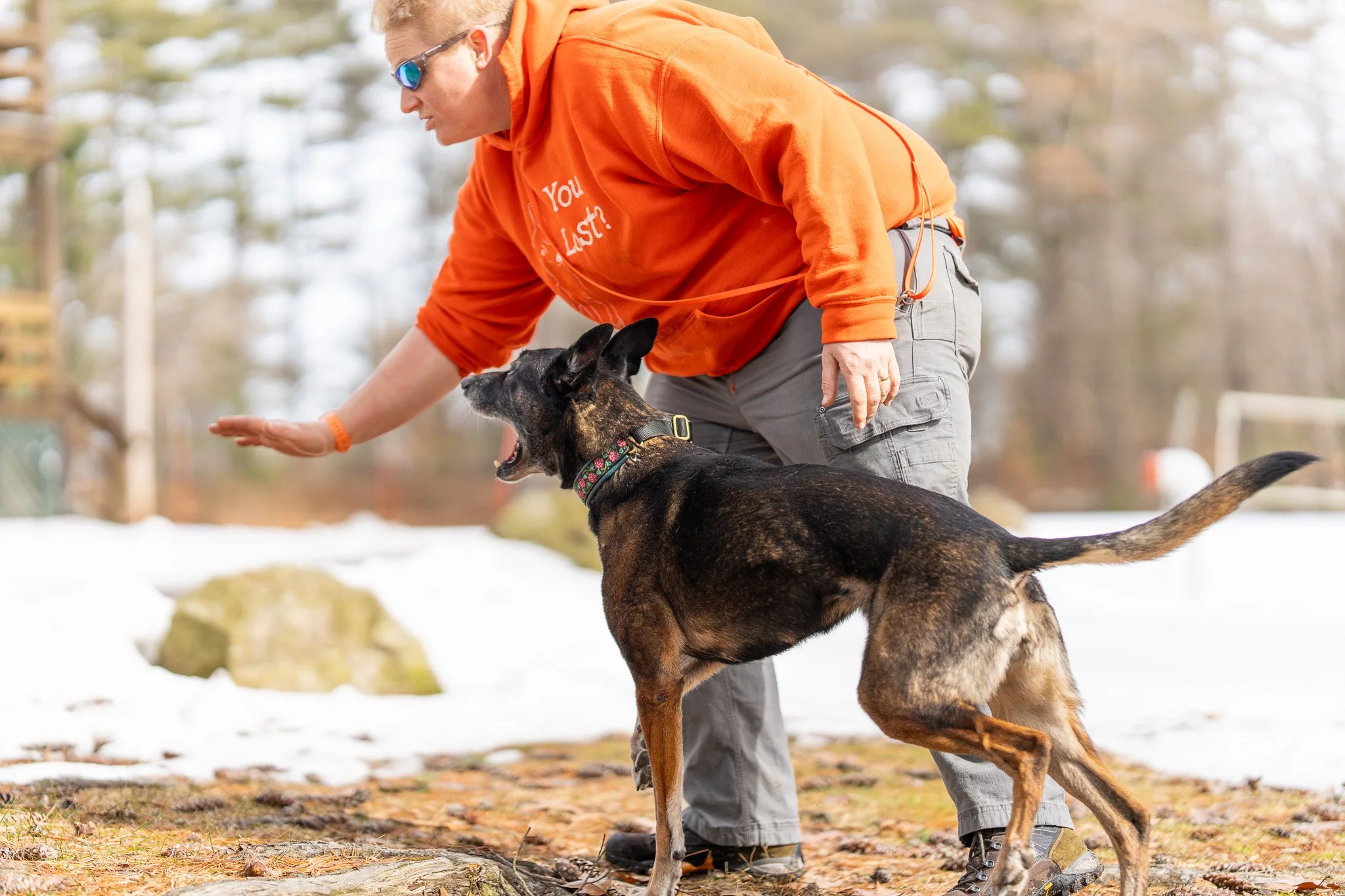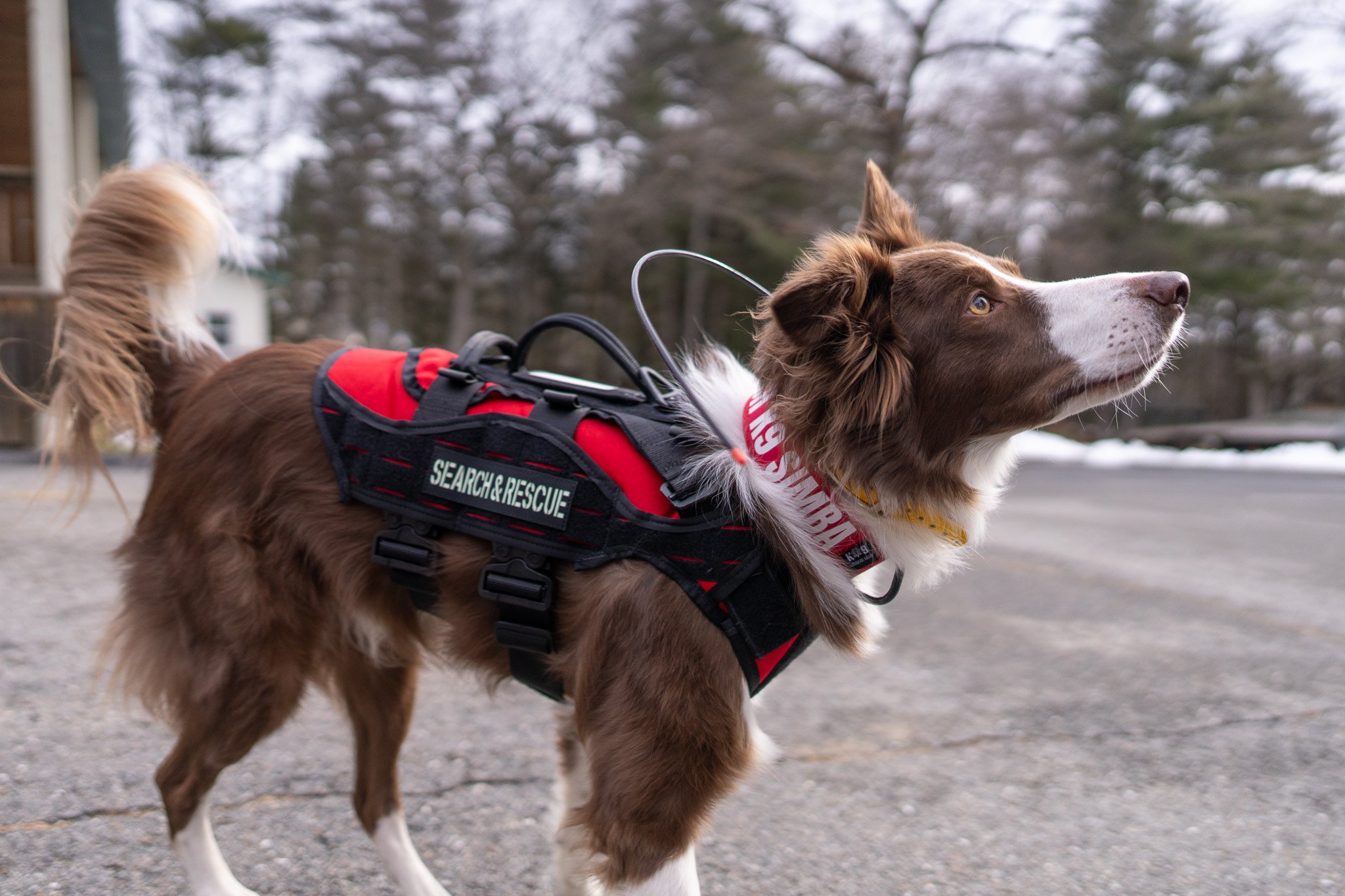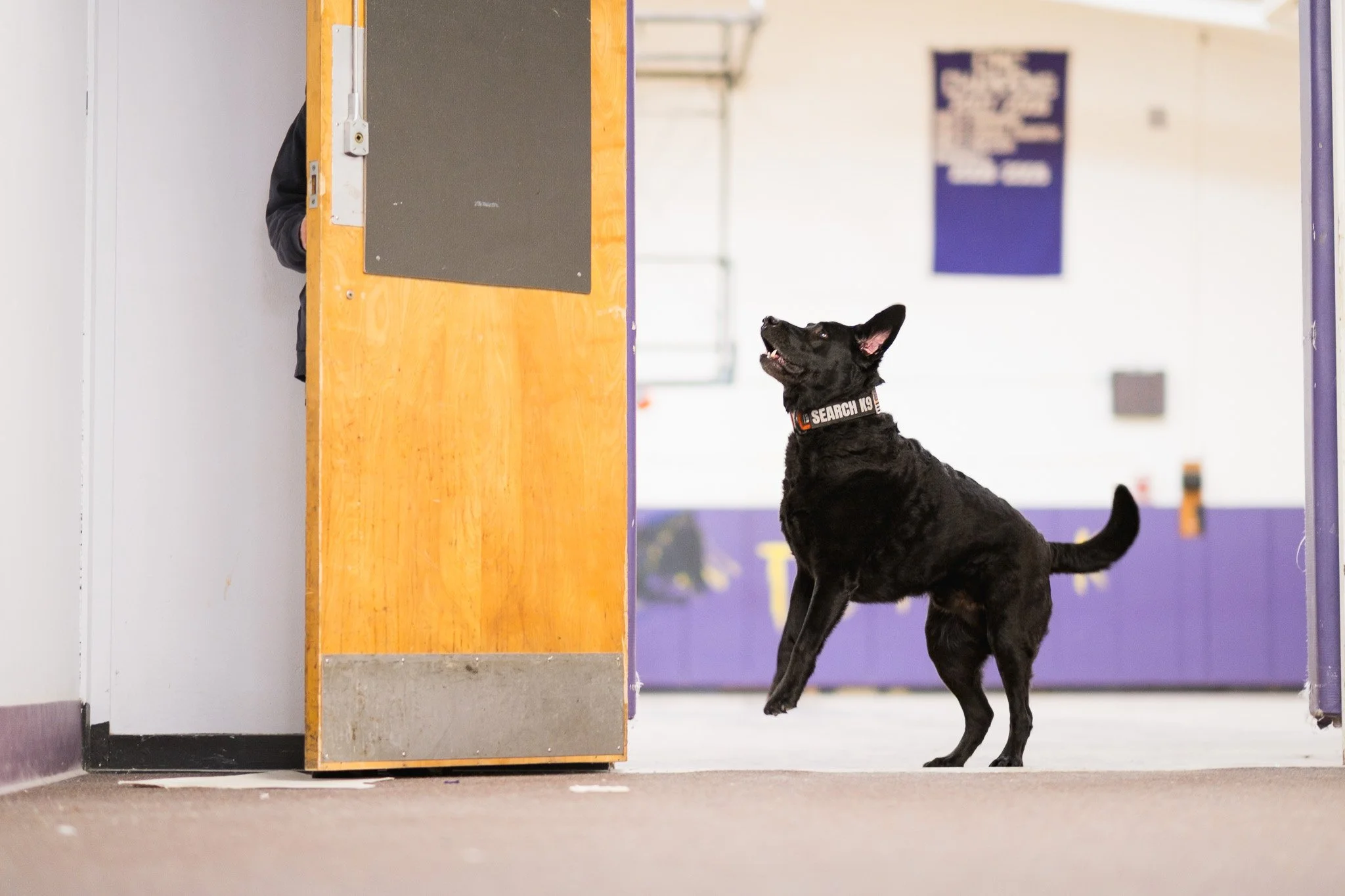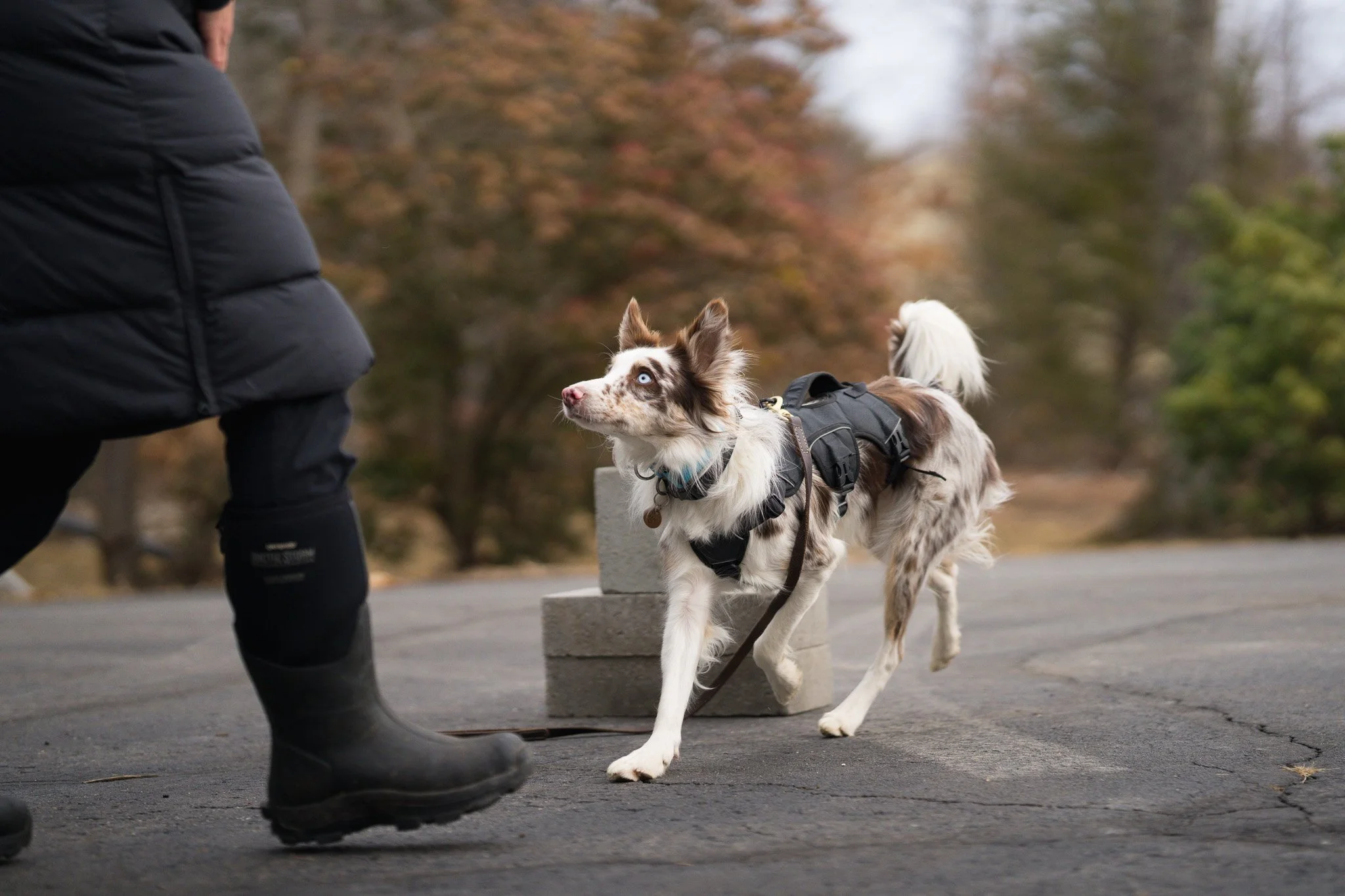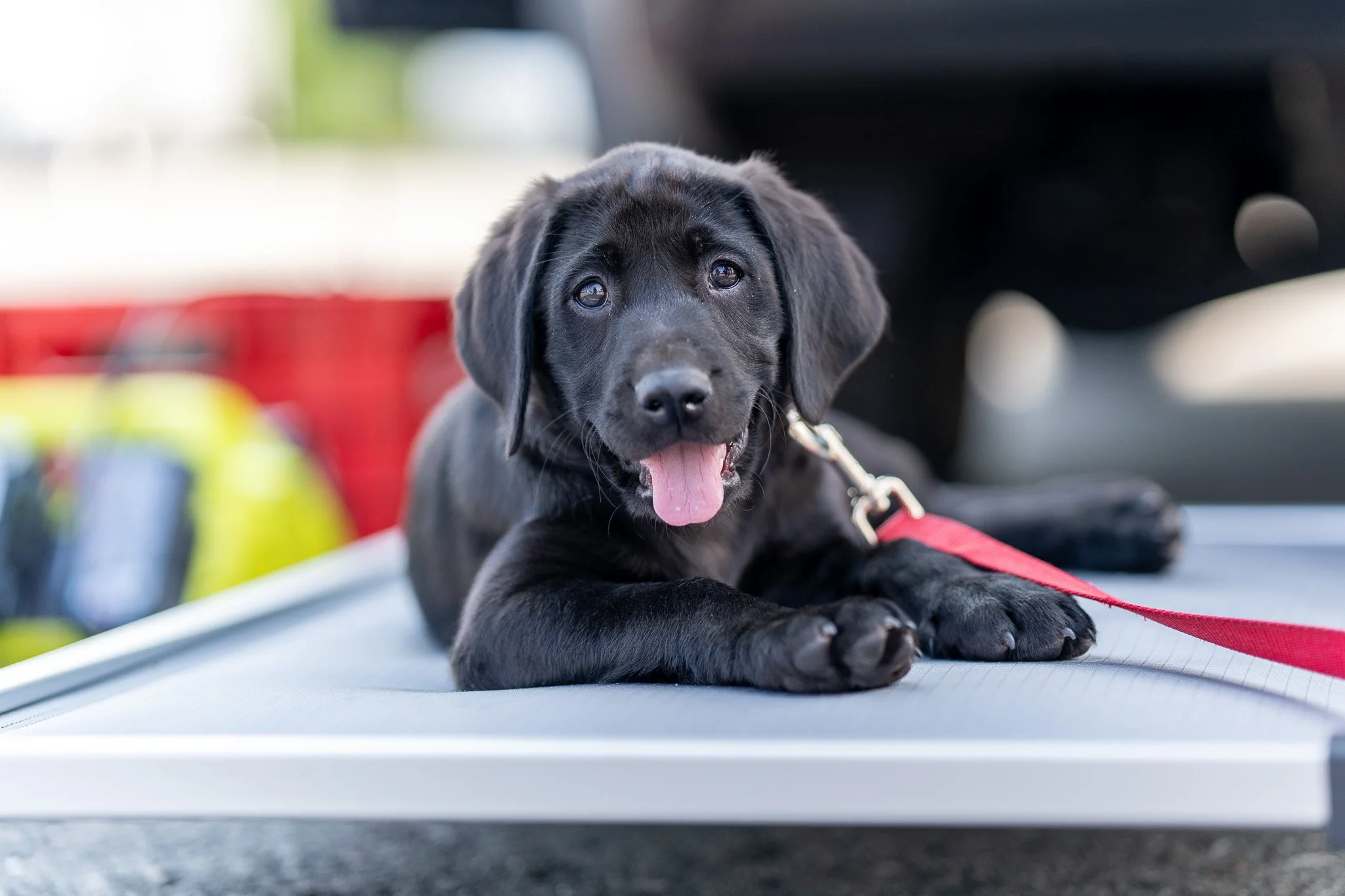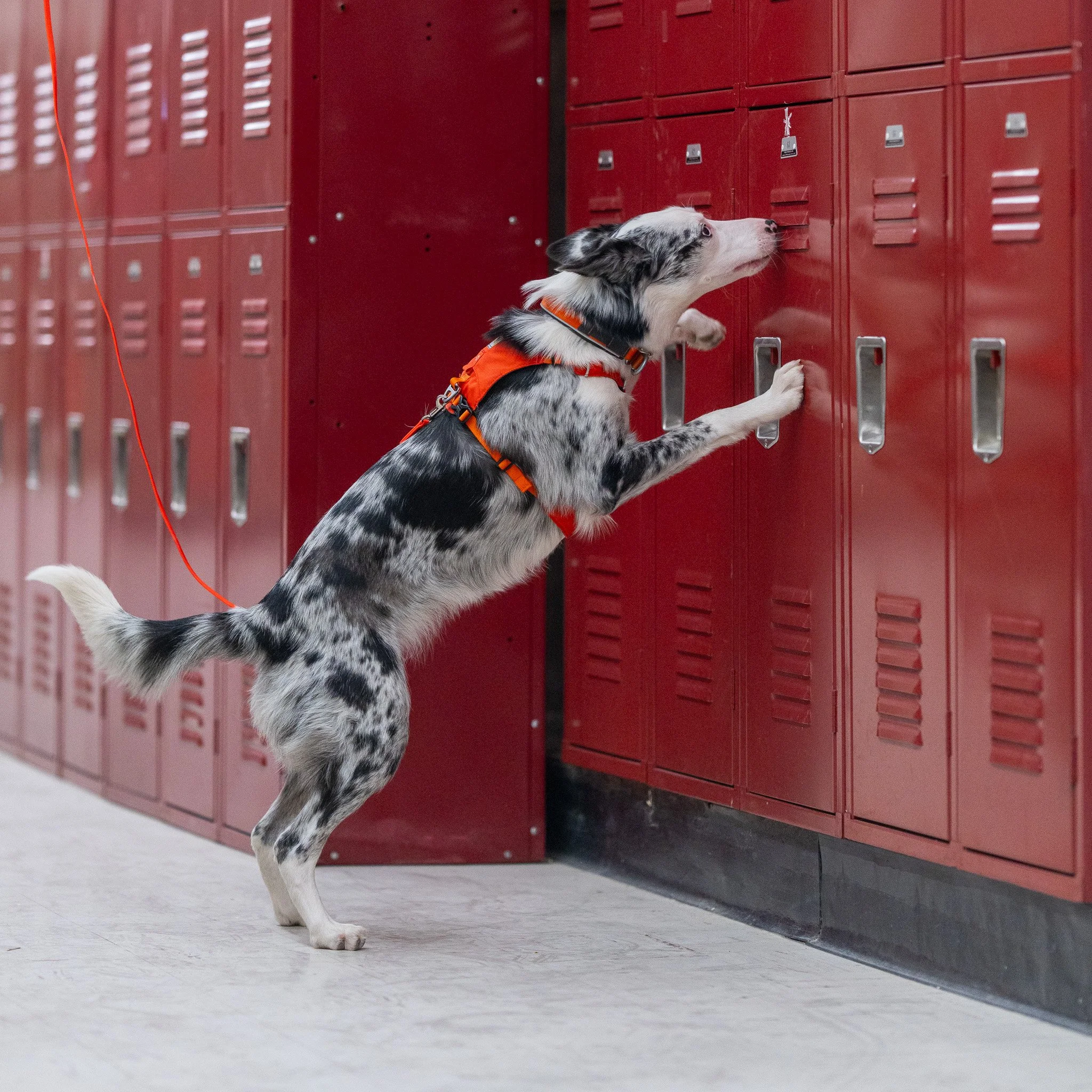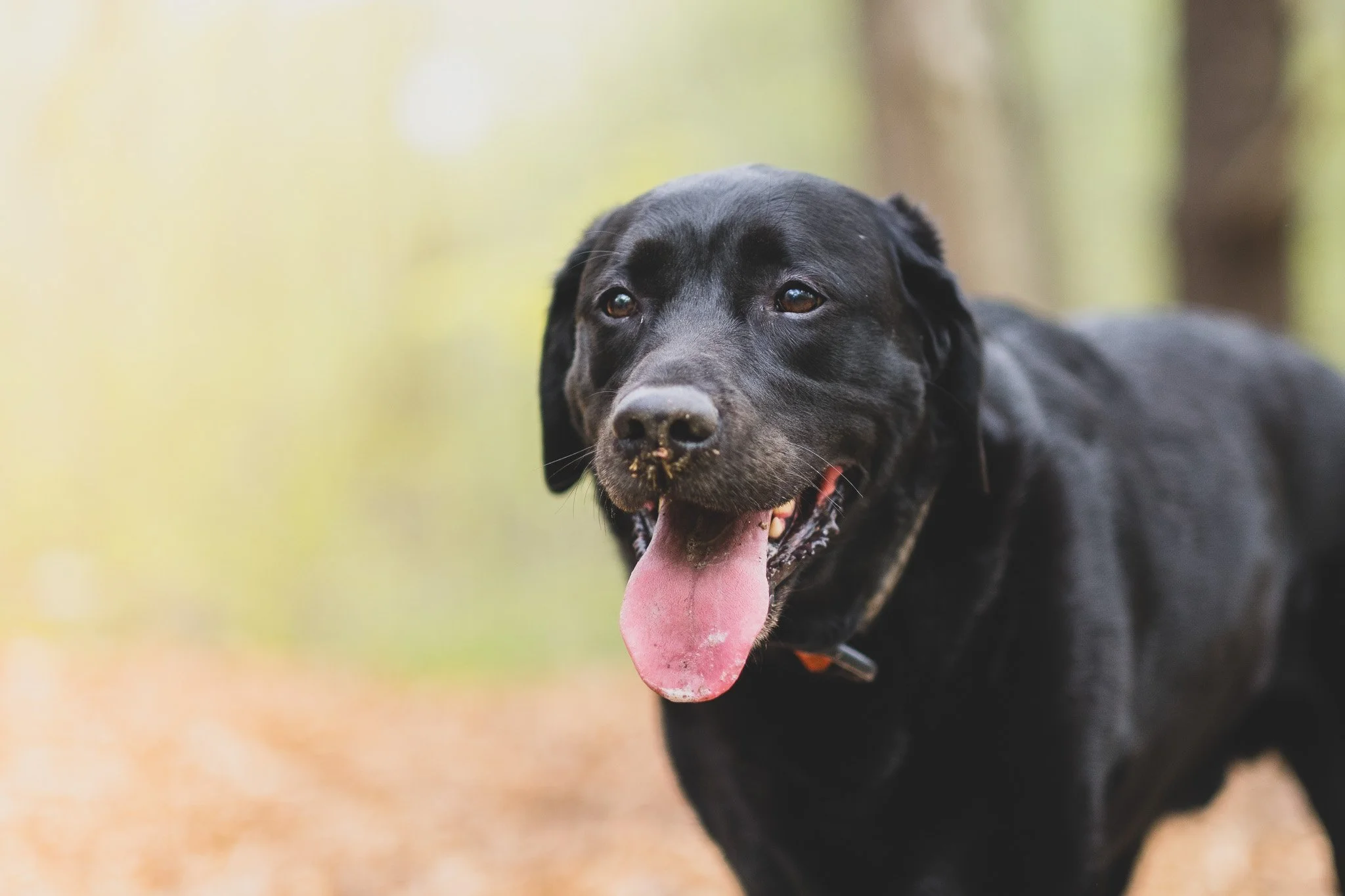
What We Do
Our focus
MACRT currently ONLY trains dogs for human remains detection or live find area search. While the Training Directors have experience training dogs in tracking and scent-specific trailing, we have not seen a deployment need where these skills have been requested, therefore we do not train team members in these disciplines.
Human Remains Detection
The detection of human remains is a primary focus of MACRT and the number one area where our resources are most frequently requested. Searches for human remains range from cold cases that are several years to decades old, to verification of historical gravesites and assisting law enforcement and private investigators in providing forensic evidence for active cases.
Canines that are suitable for this work have a high drive and a natural ability to hunt for the odor spectrum we train them on. They are agile dogs with good endurance, environmental sureness and are social or neutral with people and other canines. All dogs are trained in basic obedience and have the ability to work on or off lead during a search.
All our HR dogs are exposed to a broad spectrum of human remains odor including:
Very small / trace evidence (such as a blood smear)
Burned remains
Buried remains
Submerged remains
Dry bone
Body components (limbs, wet bone, skin, fat, muscle)
Whole cadaver
Our team trains annually with the Center for Forensic Training and Education to ensure all canines will alert on a whole body. Many of our K9s have had multiple whole body training exposures through the Center for Forensic Training and Education (CFTE) or training at other sites across the country.
All K9s are trained to perform a specific behavior when they find the odor of human remains. This may be a sit, down or bark at source. This trained behavior, also known as a “Trained Final Response” is a required skill of all the canines and must be performed consistently.
HR K9s must show fluency in a variety of environments including large areas of wilderness, urban locations, building interiors, vehicles, shorelines, ponds and lakes and even rubble. They must alert to a wide range of age and size of remains, as well as discriminate between what was human and what might be animal remains. It is just as important for a handler and K9 to clear an area and have confidence that an area is negative (contains no remains).
All teams certify on an annual basis through one or more of the nationally recognized organizations (International Police Work Dog Association; National Search Dog Alliance or others). It typically takes approximately 1.5 – 2 years to train a dog to certification status, and certification does not mean the dog will be considered deployable if training experience and exposure is too limited during that period. Therefore, all handlers must commit to regular team training as well as participating in external seminars where they and their K9s are exposed to other source material, environments and methodologies.
Live Find Area Search
A small number of MACRT handlers work dogs trained strictly to find live humans.
These K9s are not scent specific meaning they will find anyone in their area. These dogs are trained to traverse large areas of wilderness but may also see urban or building interior searches. A basic live find evaluation requires the dog and handler to search a 40 acre or 60 acre area in approximately 2 hours and a 160 acre area in about 6 hours. In addition, live find K9s are also trained to work at night where scent conditions are often more favorable. Typically, handlers grid their area working the downwind side to ensure the K9 can have the greatest access to odor. K9s have been shown to detect odor from over 100 – 300 meters away from the subject!
When a live find K9 finds a lost subject, the K9 is also trained to perform a Trained Final Response. Typically, the K9 will perform a find – re-find alert where they return to the handler and perform a terminal behavior (such as a sit or a bark at the handler) and then they return to the missing person. Depending on the distance from the handler to the subject, the K9 will repeat this “re-find” behavior multiple times until the subject is found by the handler. Other K9s, especially those also trained in live find rubble work may perform a bark alert at the lost person where they will stay in front of the person and bark continuously until the handler finds them both.
Live find K9s must be very fit, have excellent obedience and be social/neutral with people and other dogs. They must be able to perform their Trained Final Response consistently even when searching after several hours.
Navigation skills using either map and compass, or GPS is a must for all handlers. Handlers must also calculate a Probability of Detection based on the conditions (temperature, wind, humidity, terrain, etc.) for their area and be confident in how well they performed their search based on the conditions. Unlike human remains detection, a live find search is an EMERGENCY. Therefore, the expectation for these teams is that they are able to deploy at a moment’s notice, move rapidly and efficiently through a large wilderness area, and be able to administer basic first aid to a found victim. In addition, they typically carry a 24-hour pack in case they need to remain out overnight should a search be extended.
